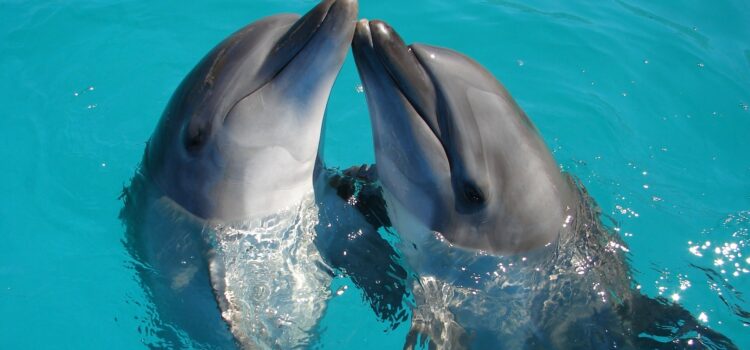

This article is an excerpt from the Shortform book guide to "The Selfish Gene" by Richard Dawkins. Shortform has the world's best summaries and analyses of books you should be reading.
Like this article? Sign up for a free trial here .
What is kin selection? How does kin selection disadvantage some family members and prioritize others?
Kin selection is a situation in nature where some relatives allow themselves to be put at a disadvantage for the benefit of others. When there are limited resources, they have to be divided between parents and children and between mates.
Read more about kin selection and how it works.
Overview of Kin Selection
In The Selfish Gene, Richard Dawkins discusses how the purpose of life is survival of genes. This doesn’t always mean an individual animal or species surviving. Kin selection shows how some animals may allow their kin to take limited resources, putting themselves in danger. There are two kinds of kin selection discussed: parents and children, and between mates.
Parents vs. Children
There’s a natural struggle between parents and their children for exactly what proportion of the resources each child should get. The parent will want to distribute resources for the best possible genetic payoff. The child, as previously stated, will be selfish up until its siblings get more than double the benefit it would receive from taking those resources itself. Therefore, the child will often try to trick its parents into believing it needs more resources than it’s getting.
A child may use various tactics to try to get more than its fair share of the resources. A common tactic, especially among birds, is to cry more loudly than the others in the nest. Since the volume of a cry corresponds to how hungry the bird is, a louder hatchling can trick its parents into believing that it’s hungrier than its siblings.
One species of bird, the honeyguide, has a more extreme strategy: It lays eggs in other birds’ nests like cuckoos do. Upon hatching, the newborn honeyguide will kill all the other hatchlings in the nest, thereby eliminating them as competition. Since it has no genetic relationship to its “foster siblings,” this strategy has no downside for the honeyguide’s selfish genes.
Honeyguides aside, this struggle between parent and child causes an apparent paradox: A child that takes more than its fair share will pass those genes on to its own offspring, lowering the number of children it can successfully raise because each child will demand more resources. In other words, being more successful as a child will make it less successful as an adult.
However, the animal has different purposes during the different phases of its life. Therefore, there’s no paradox between the child attempting to trick its parent into giving it more resources, and the parent attempting to see through those deceptions. All it means is that we must take the cost to future offspring as well as current siblings into account when considering the selfish behavior. If the total cost (to siblings and offspring combined) is less than double the benefit to the individual, then the genes causing that behavior will naturally be selected for. Kin selection shows how the cost to the individual may be outweighed by the benefits to the group.
Males vs. Females
If there can be conflicts of interest between parents and children with kin selection, then there should be a severe conflict of interests between mates, who have no relation to each other at all. Genetically speaking, each is only valuable to the other in terms of their shared offspring and aren’t “kin” exactly. Therefore, though each wants to end up with as many surviving children as possible, they’ll naturally disagree on who should have to invest the resources to raise those children.
There are benefits to each of two conflicting situations: staying with one’s partner for as long as possible, and abandoning them with the child before being abandoned oneself. A mated pair that stays together can split the resource cost of raising their offspring. However, a parent that abandons their mate and offspring gains a significant advantage—if they can be reasonably sure that the remaining mate will successfully raise the child.
In either situation, it’s to an individual’s advantage to keep his or her partner around. This simple fact goes a long way toward explaining the courtship behavior seen in many species of animals. Long, elaborate courtship rituals force both partners to invest a lot of resources into the future child before mating has even occurred. Knowing that future relationships will require similar periods of investment makes the partners less likely to abandon their current mates. The male also gets the benefit of knowing that the female is not already pregnant by someone else, if the courtship lasts long enough.
Females naturally have a larger investment in their offspring than males do, at least among mammals. Females, by definition, have larger gametes that are more costly to produce. Gametes are also known as sex cells—sperm and eggs, in animals. They also have to carry the child, and produce milk for it after birth. Therefore, it seems reasonable that a male could abandon his mate and go on to impregnate other females in order to produce the maximum number of offspring possible.
In some species this does indeed happen, but in many it doesn’t. In fact, a few species like beavers and wolves form lifelong monogamous pairs. In those species, there must have been some sort of pressure working against the mate-abandoning strategy—for example, females were unable to raise the children on their own, became adept at spotting males likely to abandon them, or would abandon the children if left alone in spite of the genetic cost.
An interesting side note: In some species of fish this pattern is reversed. Female fish deposit their eggs and leave immediately. Male fish come along later to fertilize the eggs, and are then left to raise the children themselves.
We can apply game theory to this male vs. female situation, as we did to the fighting and bluffing birds earlier. We may assume that there are two male strategies: faithfulness and unfaithfulness. A faithful male will stay with his mate, while an unfaithful one will leave as soon as possible. There are also two female strategies: coyness and forwardness. A coy female will insist on a lengthy courtship, a forward female will mate with any male immediately.
By assigning a point value to a successfully raised child, and penalties to the resources invested in courtship and raising the child, we could come up with a stable ratio of each of these strategies to find the ESS. As before, any numbers we assign would be purely arbitrary, and the exact ESS would depend on which numbers we pick. Therefore, the actual result of this exercise is less important than the fact that it can be done—more scientific, less arbitrary applications of game theory can reveal a lot about the behaviors and strategies of individuals.

———End of Preview———
Like what you just read? Read the rest of the world's best book summary and analysis of Richard Dawkins's "The Selfish Gene" at Shortform .
Here's what you'll find in our full The Selfish Gene summary :
- Why organisms don't matter, only genes do
- How all life forms begin with a replicating molecule
- How species need to balance aggression and pacifism to survive






